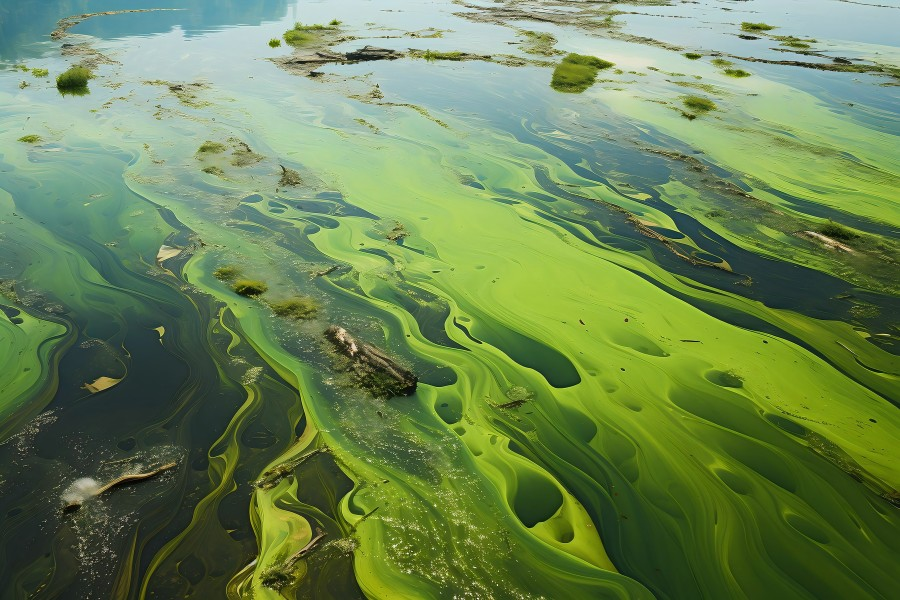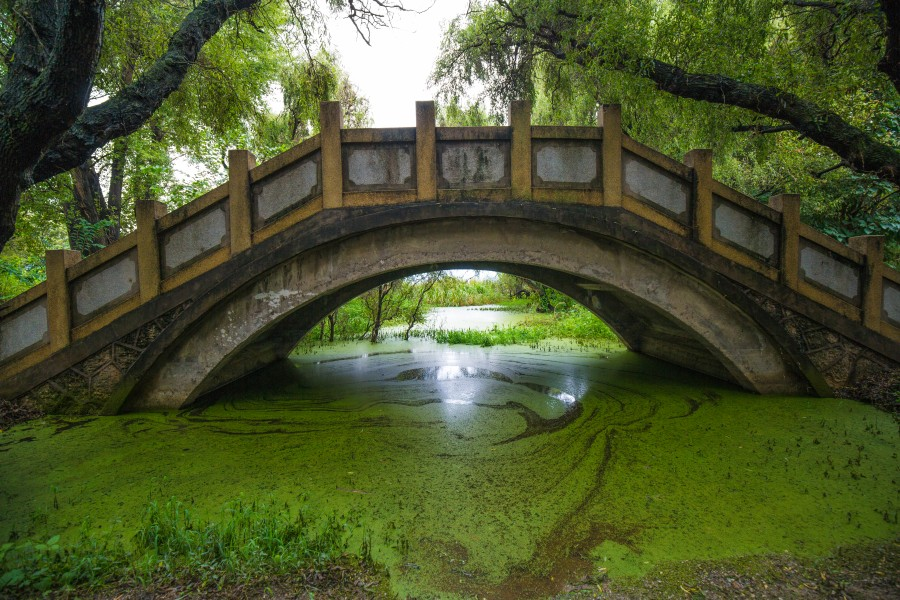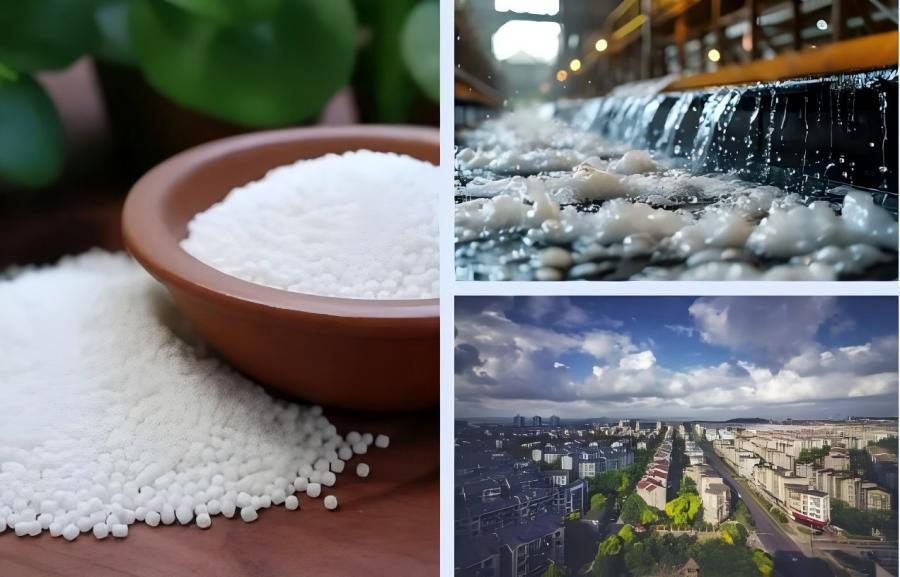Eutrophication of water bodies refers to the phenomenon that under the influence of human activities, nutrients such as nitrogen and phosphorus required by organisms enter slow-flowing water bodies such as lakes, rivers, bays, etc. in large quantities, resulting in rapid reproduction of algae and other plankton, a decrease in dissolved oxygen in the water body, deterioration of water quality, and mass death of fish and other organisms.
Its causes mainly include the following aspects:
1. Excessive nutrients: Excessive content of nutrients such as total phosphorus and total nitrogen is the direct cause of eutrophication of water bodies.
2. Water flow state: Slow water flow state (such as lakes, reservoirs, etc.) makes it difficult for nutrients in the water body to be diluted and diffused, which is conducive to the growth of algae.
3. Suitable temperature: Increased water temperature, especially in the range of 20℃ to 35℃, will promote the growth and reproduction of algae.
4. Human factors: The large amount of nitrogen and phosphorus-containing wastewater, garbage and fertilizers discharged by industry, agriculture and life in the surrounding economically developed and densely populated areas are important human causes of eutrophication of water bodies.
Eutrophication of water bodies and environmental impacts
The impact of eutrophication of water bodies on the environment is mainly reflected in the following aspects:
1. Water quality deterioration: The massive reproduction of algae will consume the dissolved oxygen in the water body, causing water quality deterioration and affecting the survival of aquatic organisms.
2. Ecological imbalance: The crazy growth of algae will destroy the material and energy flow of the aquatic ecosystem, leading to an imbalance in species distribution, and even gradually destroying the entire aquatic ecosystem.
3. Air pollution: The decay and decomposition of algae will produce odors and pollute the atmospheric environment.
4. Water shortage: The deterioration of water quality will aggravate the shortage of water resources.
A lake that was originally clear and bottomless suddenly became green. This may not be the vitality of spring, but a warning signal of eutrophication of water bodies.
Eutrophication of water quality, in simple terms, is “overnutrition” in water bodies. When the content of nutrients such as nitrogen and phosphorus in slow-flowing water bodies such as lakes and rivers is too high, it is like opening a “buffet” for algae and other plankton. They will reproduce wildly and form “water blooms”. This not only makes the water turbid, but also brings a series of serious environmental problems.
The driving force behind eutrophication of water bodies, so where do these excessive nutrients come from? There are mainly the following sources:
Agricultural fertilization: In order to increase crop yields, a large amount of chemical fertilizers are used, and many of the nitrogen and phosphorus fertilizers flow into the water body under the scouring of rainwater.
Domestic sewage: Domestic sewage in cities contains a large amount of nutrients in detergents and food residues. If it is discharged directly without treatment or improper treatment, it will become the culprit of eutrophication of water bodies.
Industrial emissions: Some factories will produce wastewater containing nitrogen and phosphorus during the production process. If it is not discharged properly, it will also pollute the water body.
Natural factors: Although natural factors such as soil erosion can also bring in some nutrients, in modern society, human activities are the main cause of eutrophication of water quality.
The consequences of eutrophication of water bodies:
Water quality deterioration: The large-scale reproduction of algae will consume the dissolved oxygen in the water, causing the water quality to deteriorate and even emit an unpleasant odor.
Ecological imbalance: Algae outbreaks will squeeze the living space of other aquatic organisms, causing the death of fish and other organisms and destroying the ecological balance.
Economic losses: Eutrophication will affect the development of industries such as fisheries and tourism, causing losses to the local economy.
Health risks: Eutrophic water bodies may contain harmful substances, such as bacteria and toxins, which pose a threat to human health.
Combined with the causes of eutrophication of water bodies, necessary nitrogen and phosphorus index tests are carried out on domestic sewage and industrial wastewater, and “blocking” from the source can effectively reduce the input of exogenous nutrients. At the same time, the detection and monitoring of nitrogen, phosphorus and other indicators in lakes and rivers will provide necessary data support and decision-making basis for water quality safety and protection.
What indicators are tested for eutrophication of water bodies?
The indicators of water eutrophication detection include chlorophyll a, total phosphorus (TP), total nitrogen (TN), transparency (SD), permanganate index (CODMn), dissolved oxygen (DO), biochemical oxygen demand (BOD), chemical oxygen demand (COD), total organic carbon (TOC), total oxygen demand (TOD), nitrogen content, phosphorus content, total bacteria, etc.
LH-P300 is an economical portable multi-parameter water quality meter that can quickly and accurately measure COD, ammonia nitrogen, total phosphorus, total nitrogen, organic pollutants and inorganic pollutants in water samples. It can meet the detection needs of key nitrogen and phosphorus indicators of water eutrophication. The instrument is small and light, easy to operate and fully functional, with extremely high cost performance. Water eutrophication is related to everyone’s life, health and quality of life. Through scientific monitoring and response, I believe we will be able to overcome this challenge and protect the water resources on which we depend for survival. Let us start from now, start from the small things around us, and contribute to the sustainable development of water resources!
Post time: Aug-09-2024








